

|
Cultural Information
An acquaintance or a friend? Foreigners often don’t know when to use the word “an acquaintance “and when “a friend”. This happens because in Russian these words have additional meaning. Usually we use the word “an acquaintance” when we want to show that there’s no friendship between people. Usually we speak using this word about a colleague or a neighbor. Or sometimes we can call a person whom we don’t know well “an acquaintance”. We say “a friend”, when we want to stress, that we know this person well and for a long time. People often say “ a school friend”, “an old friend”, and “a close friend”. One shares common interests and has close relationship with a friend. The word “a friend” toward a close person can be used regardless of gender. One can say: Maria is a close friend of mine”, “Sergey is my best friend”. The word «подруга» “a girl friend” is an equivalent to the word “friend”, when it’s used by a woman. But when it’s used by a man, this word gets and additional “sexual” connotation. That’s why if a Russian man wants to say that he has only friendly relationship with a woman, he uses the word “an acquaintance”. But if he wants to show that there’s not only friendship, but love between them, he says: “my girlfriend”, “my girl”. Don’t forget about these peculiarities when you tell about your girlfriends! Moscow Map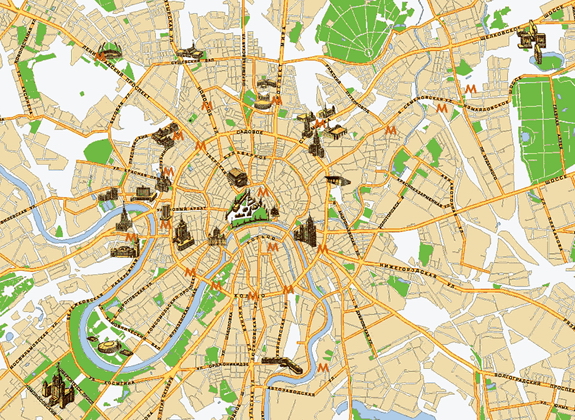 If you haven’t bought a map of Moscow yet, you are definitely thinking about it in the close future. When you come to an unknown city, it’s necessary to have a map. In any case, you can find Moscow map in internet on the following site: map.yandex.ru. Look at the map: you’ll see that there are many “circle” streets. They encircle the central place which is the Kremlin. The Kremlin is a political and administrative centre of Russia. The President works in the Kremlin. Important governmental meetings and events take place there. Earlier the most important and the richest people of Russia lived there, for example, the Patriarch – Head of the Russian Orthodox Church. The Kremlin was both the dwelling and a fortress: that is why there’re such thick walls in the Kremlin. There are magnificent works of art and history from different centuries inside and outside of the Kremlin. In the past all Moscow was inside the Kremlin. That’s why you can see such thick wall around it. Later the town began to grow and a new wall, another “ring” appeared, which took the name “Kitaj- Gorod”. Several centuries later one more “circle” street appeared: the boulevard ring, and at last the main circle thoroughfare of central Moscow today appeared : “Sadovoje” or “Garden” ring. Radial streets appeared alongside circle ones. They were built to go to other Russian cities and towns: to the West- to the city of Smolensk – Smolenskaya street, to the town of Tver- Tverskaja street, to Dmitrov- Dmitrovskoje thoroughfare. Tverskaya street is traditionally one of the main central streets of Moscow. One can find the most expensive restaurants, shops, popular theatres, movie theatres, etc. here. Metro map coincides in many ways with the ground structure of the city: there is a” circle “ line in the center of the city (people often call it “a ring” line) and many radial lines which cross the “ring” line. To get to the downtown, for example, to the Kremlin or to the Red Square, one needs to go to some central stations: “Arbatskaya” or “Ohotny Rjad” or “Biblioteka Lenina” or “Plocshadj Revoluzii”. Russian Cuisine (part two)pelmeny, meat dumplingsThere is a favorite dish in Russian cuisine that many Russians mistakenly take for a traditionally Russian one. This is pelmeni. May be because this dish is so universal: one can eat it as a soup or as a main dish, one can store them for a long time. Pelmeni came from Siberia to Russia. They were brought by the Mongols to Siberia, and this dish came to Mongolia from China. People in Siberia and the Urals were making pelmeni by the whole village, especially in late autumn, when first frosts fell on the ground. Pre-made pelmeni were put in big sacks and left in a cold place, sometimes near the house, on the snow: such pelmeni could be stored till springtime! There is a tradition in Russia not to make pelmeni with sweet addings: only with ground meat, fish or mushrooms. Many Russians like to eat not only pelmeni but to drink the broth where they were cooked. One can add butter, pepper, sour cream and sometimes vinegar to pelmeni. 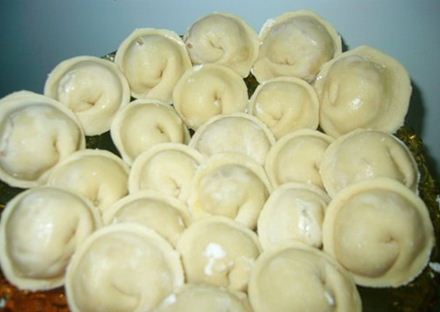 One more dish, to be more exact product, which found motherland in Russia is potatoes. It’s difficult to imagine that before 17-th century nobody heard about this vegetable. Peter the Great who was a great reformer in Russia, and who liked all new and unusual things, sent the first sack of exotic vegetable from Holland to Russia. Probably he didn’t explain well how to cook dishes from potatoes – nobody liked the vegetable. But the state wanted to plant potatoes without any explanation and it made people eat it. People got poisoned: the peasants didn’t know that it has to be boiled: they ate potatoes fresh: roots and stems. Only by the end of the 19-th centuary Russia understood what beautiful veggie it is. Today we call it “the second bread”. One can make more than 100 dishes out of it. 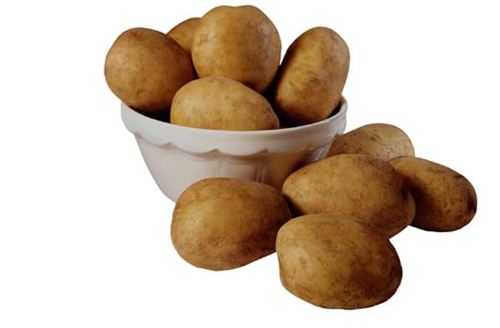 The most popular vegetable in ancient Russia is a turnip. It is from the cabbage family. As well as cabbage and carrot turnip can be stored during winter period, it grows well and doesn’t need lots labor to take care of it.  Turnip is a very healthy product. Some time ago it was used to cure different illnesses as well as food. Now turnip is not grown widely. It’s used for eating it fresh and some type of turnip is used as food for cattle. One can eat turnip fresh and boiled. It’s so simple to cook different dishes from turnip that there’s even an expression in the Russian language: as simple as stewed turnip. This means that it’s very simple The fact that turnip was very popular some time ago is reflected in a popular fairytale for small kids “A Turnip”. This fairytale tells that once upon a time a huge turnip has grown at the vegetable garden of an old man and his wife. It was so big that nobody could pull it out.  The word “vodka” is known in Russia from the 17-th century and it’s the derivative from the word “water”. In Russia people didn’t drink or manufacture vodka till the 15-th century, there were other low alcohol beverages like beer or honey. Since 15-th century vodka was made in Russian monasteries from wheat and since then Moscow prince Ivan III introduced state control on production and sales of vodka. The word “vodka” for dissolved alcohol in water was fixed only from 18-th century, before that such drink was called “bread wine”. High quality of Russian vodka is explained by very high distillation of alcohol. In the middle of the 18-th century according to the state law noble people were permitted to manufacture vodka. Land owners started to implement this law so actively that one could find a small distillation plant practically everywhere. A specific of home made vodka is that berry extracts are added into it. In 1894-1896 state standard for the quality of vodka was introduced. It consisted of 40 parts of ethyl alcohol which were put through coal filter. This drink was called “Moscow special”. At that time state monopoly was introduced on vodka. Gradually it was spread out around the whole country. In Moscow and St.Petersburg there’re museums of Russian Vodka.. 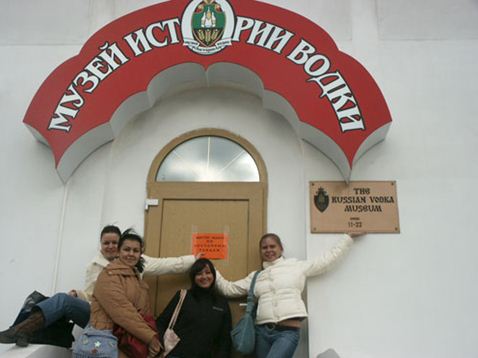 Many foreigners think that Russian people drink vodka every day, which is far from reality. People usually drink vodka and other alcoholic drinks during holidays with friends or relatives. There’s certain culture in Russia in drinking vodka. Vodka helps to digest different fatty hot spicy, salty Russian dishes. These dishes help people not to get drunk after drinking vodka. One can drink a little of vodka in medical purposes: when a person is frozen vodka helps to warm and stimulates immune system. In medical purposes one can have very simple food after drinking vodka: a piece of rye bread or a salty cucumber. One can not imagine the traditional Russian kitchen without it's two special dishes: kholodets and herring "under fur"!KholodetsKholodets is one of the favorite national dishes, although one couldn't guess that at first: it doesn't look very appetizing.It is prepared in the following way: Several large pieces of meat, beef, or pork should be boiled on low heat for 4-5 hours. Kholodets requires only particular parts of meat - ideally, it can be the head, brain or legs of the cow, and, if you are using pork, you can also add it's ears and tail. During the boiling process, the meat softens and produces gelatin, which will later harden when cooled. The dish's name itself somewhat explains the preparation process - "kholodets" comes from "kholod", which means "cold". Before cooling, some vegetables are added to the meat substance - carrots, greens, garlic, and some spices. Then it is cooled for a while, and afterwards - the taste is unforgettable! Sometimes fish is also cooked in a similar way, with gelatin being added to it. Cooking details are the same as in kholodets, except instead of using chunks of meat, pieces of fish are used. This dish is called "zalivnoe". 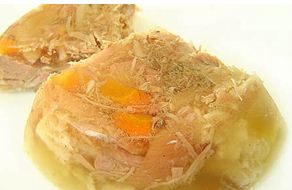
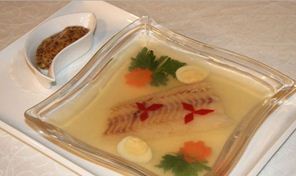 This dish with such a strange name is relatively new, but very popular. It first appeared during the Soviet times, when available food products were very limited. Nevertheless, one still wanted to be able to make nice dishes using the groceries they could use at the time. Perhaps it was only the creative Russian women who could come up with such an original dish that uses simple canned herring, and also give it such a funny name.Why is it called "herring under fur?" Because the herring is on the bottom of the dish, covered with several layers of vegetables, which become it's warm "fur coat". 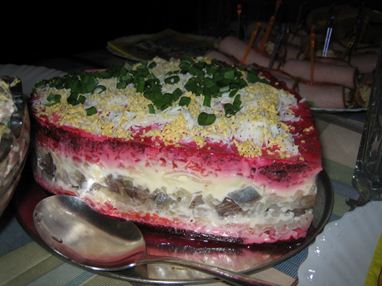 The dish is extremely simple to prepare. First, you cover a flat dish (or a large plate) with pieces of herring. Then, on top of it, you add several layers of boiled vegetables: first potatoes, then carrots, and then beets. In between each layer should be a layer of mayonnaise. When the dish is ready, it can be decorated with greens and pieces of hard-boiled egg. 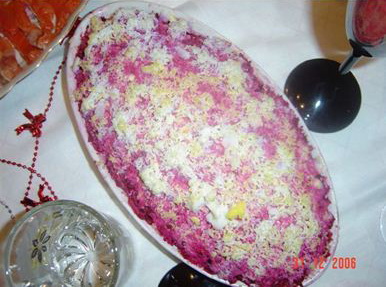 Some words about salads…A salad is not a Russian dish. Russian people didn’t like such dishes where products were cut into small pieces. Russians were suspicious: why everything is cut into such small pieces and who knows what it is. Salads and appetizers started to appear in Russia beginning from the 18-th century when Western traditions were introduced to Russia. By the 20-th century appetizers were so varied and popular that some of them could be called “people” appetizers. The most popular one is the salad called “Olivier”, which is called “Russian” salad in Europe and the USA. Salad “Olivier”Lucien Olivier was the name of a Frenchman who lived in Moscow in the beginning of the 19-th century. He had a good restaurant and he invented a recipe for his restaurant specialty – a salad. This salad got the name “Olivier Salad”. In the Soviet period when the choice of products was scarce, Russian women recalled about this simple and tasty recipe. They substituted hard-to-find ingredients into available-at-that time ones. Today one usually puts boiled veggies into the salad: carrots, potatoes, sausages or meat, eggs, fresh cucumbers and onion and add mayonnaise. The salad “Olivier” is ready. In some restaurants salad “Olivier” is called “Stolichny” but this is the same salad. 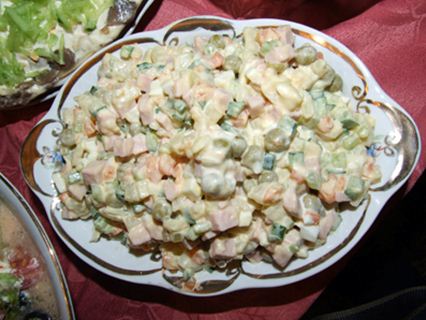 Another popular Russian salad is vinaigrette. This word came from French but in Russian it didn’t mean a sauce but a special dish was called so. One puts boiled veggies into this salad: potatoes, carrots, beats which gives sweet taste and red color to the salad. One has to add salty cucumbers (sometimes sauerkraut) and onion, add sunflower oil or mayonnaise.Another popular Russian salad is vinaigrette. This word came from French but in Russian it didn’t mean a sauce but a special dish was called so. One puts boiled veggies into this salad: potatoes, carrots, beats which gives sweet taste and red color to the salad. One has to add salty cucumbers (sometimes sauerkraut) and onion, add sunflower oil or mayonnaise. Pay attention that Russians like mayonnaise and put this product into practically all salads. If you don’t like it, you have to tell about this before you will be served. Pay attention that Russians like mayonnaise and put this product into practically all salads. If you don’t like it, you have to tell about this before you will be served. 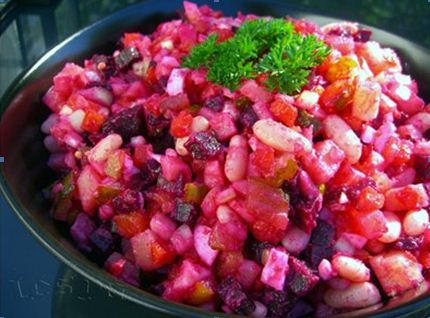 Cakes as well as pancakes were invented long ago. In Old Russ people liked doing cakes. It was very convenient to do them in the Russian stove. There were lots of types of different cakes: from different dough, different form and with different fillings. A pie was a symbol of home, good and crafty hostess and that’s why it played an important role during engagements, weddings and other festive and sad occasions. Later on cakes became obligatory part of a festive table. There’s a Russian proverb “there’s no Pancake week without a pancake and there’s no birthday day without a cake”. 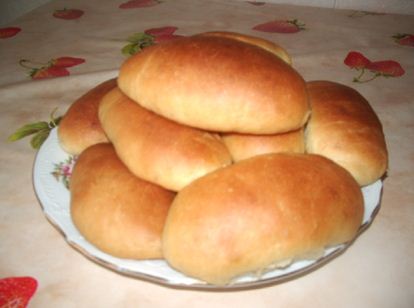 Today pyrogy are made from non sweet dough with a filling from cabbage or meat. One puts a layer of dough then a filling and again dough. Small cakes are very popular. One can make cakes with salty or sweet fillings: apples jam etc. Two ways of cooking are possible: to bake in the oven or to fry in the open fire. 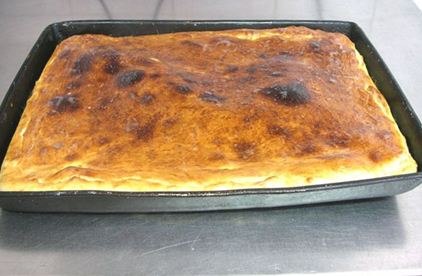 Tea came to Russia as well as to Europe from China as a gift in the 17-th century. At first it became popular as a medical beverage, later it spread throughout the country. At the fairs in Russia black tea was mostly sold. It was cheaper and soon all Russians got used to black tea. Water for tea was boiled in special devices – samovars and tea was made in special small kettles. Nowadays nobody uses samovar daily, but the idea to use two separate kettles remained: one puts some strong tea into a cup first and then adds some boiling water. 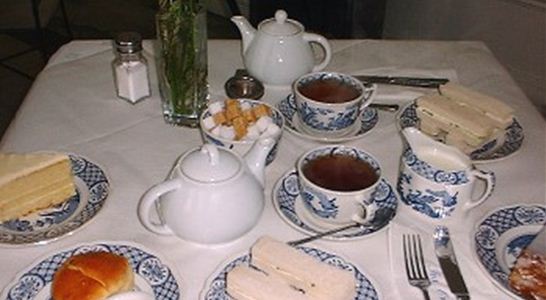 People have tea at the end of meals and lots of sweets are accompany tea drinking: jam, sweet cakes, honey and lemon. Russians like to add a piece of lemon, sugar or honey to a cup of tea. This give excellent taste and aroma to tea. Russian like to have tea quite often, after every meal: breakfast, lunch and dinner. If you dropped into a house for the first time, a polite hostess will offer you a cup of tea (with all additional things of course). This is a tradition of politeness that everyone knows. It’s easier to talk, to get acquainted while having tea: tea drinking doesn’t take a lot of time, but gives much pleasure to people.People have tea at the end of meals and lots of sweets are accompany tea drinking: jam, sweet cakes, honey and lemon. Russians like to add a piece of lemon, sugar or honey to a cup of tea. This give excellent taste and aroma to tea. Russian like to have tea quite often, after every meal: breakfast, lunch and dinner. If you dropped into a house for the first time, a polite hostess will offer you a cup of tea (with all additional things of course). This is a tradition of politeness that everyone knows. It’s easier to talk, to get acquainted while having tea: tea drinking doesn’t take a lot of time, but gives much pleasure to people. 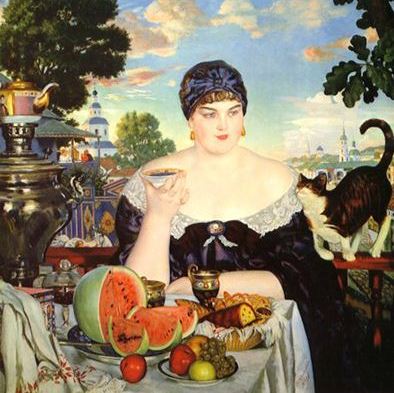 Samovar is an ancient device for boiling water and cooking tea. The system was invented in China but in China nobody cooked tea with the help of samovar. There is a tube in the middle of samovar into which one puts material for burning: coal, wood, etc. Water is between the tube and samovar itself. To make good burning process one puts a pipe on top of samovar. Water remains hot for a long time in samovar. This water is used for making tea in a small tea pot. 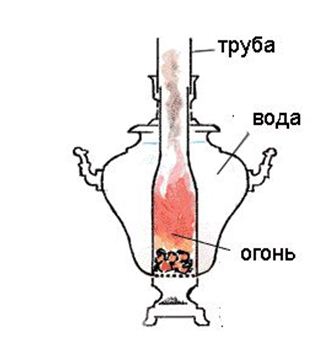 First samovars appeared in Russia in the town of Tula at the end of the 18-th century. Tula is a famous place of armory workshops. One of the craftsmen made the first samovar in his free time. Samovars became popular and production of samovars started to grow. A samovar producing factory appeared in Tula. In the middle of the 19-th century there were 28 samovar producing factories only in Tula. They produced 120 thousand samovars each year! Samovars were different: for 3 liters of water, for 5, 10 and even 25 liters! Today people don’t use samovars often, but samovars are still produced in Tula. Today these are electrical samovars. If you ever come to Tula, visit a samovar museum, where you can find lots of different types of samovars and learn their history. 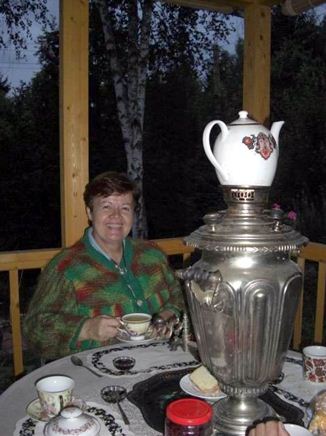 |
|||||||||||||||


|
© 2007-2012 Center For International Education |








|
||












